Editor’s Note: This article was originally published in February 2015.
Germans are known to gripe about many things: taxes, politics, Oktoberfest – and trains.
While we’re sometimes justified in moaning about pay packet deductions, drab elections and the annual invasion of beer monsters, trains are a different matter.
German Rail, or Deutsche Bahn (DB), has a reputation for delays, technical failures and strikes. When things go right, however, negotiating the rail network is one of the most pleasant German travel experiences that doesn’t involve a Mercedes-Benz 450.
Yes, punctuality has declined in recent years – so hold your stereotyping comments about German efficiency for now – but trains are generally on time and DB claims 90% arrive within five minutes of schedule. And the network covers all of Germany, transporting 4.5 million people a day on 29,000 trains along 35,000 kilometers (21,700 miles) of tracks.
Here’s how travelers can get the most out of rail travel in Germany:
Before boarding
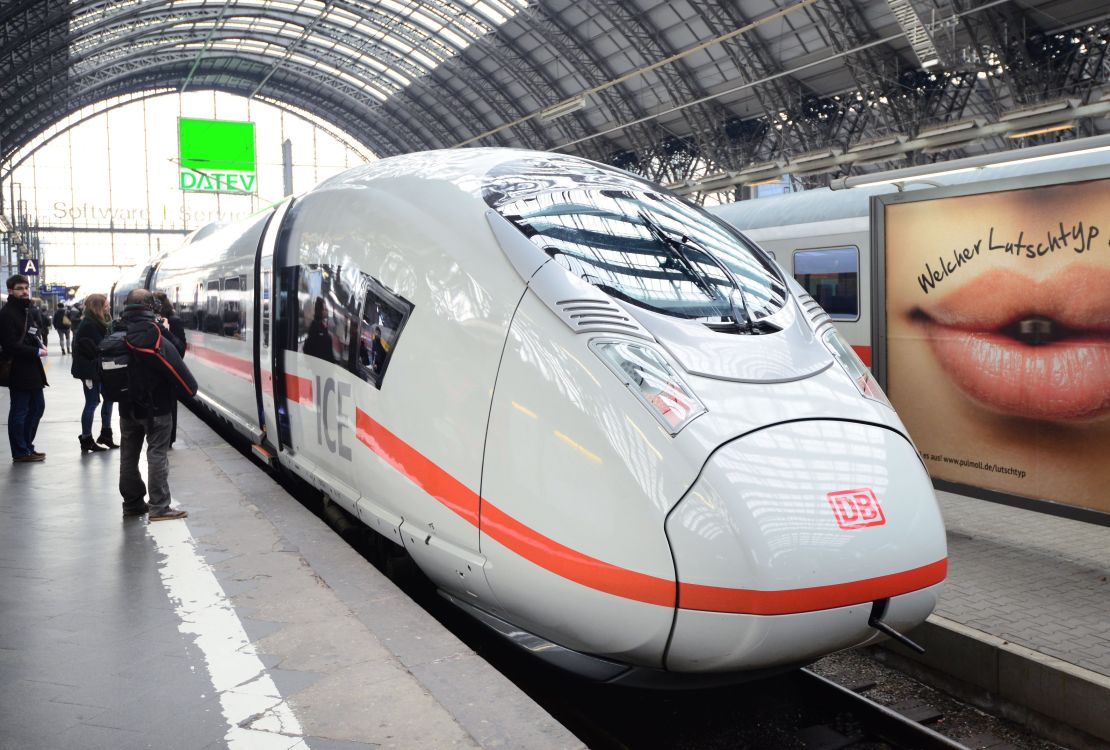
Although speedy ICE (Intercity Express) trains connect most major cities, the everyday InterCity (IC), EuroCity (EC) and regional trains are cheaper and also cover many destinations.
German trains are never reservation compulsory (except night trains), so travelers can always buy a ticket at the station. Standard fares are flexible and refundable, and you can just hop on the next available train.
To avoid long lines at the ticket office, it’s worth trying to buy tickets from the red ticket machines at stations, which have an English-language option. For longer-distance journeys, discounted fares starting from €29 ($32) are available at www.bahn.de. The special fares are only valid on the day of travel and the specific train booked.
Anyone from any country can buy tickets on bahn.de and in most cases simply print out the ticket at home, but they’ll need to carry identification with the ticket and the credit card number used in the booking process.
Good news for parents: children under six travel free, and those between six and 15 also go free when traveling accompanied by a paying adult. The Schones-Wochenende ticket gives a whole day’s unlimited travel on regional trains throughout the whole of Germany on weekends.
ICE or IC trains can’t be used with this ticket, so a long-distance journey might be slower and involve several changes. But it’s cheap: a group of five can cross Germany for just €40.
Transport strikes can occur, as happened in October 2014 with major disruptions for passengers. That being said, strikes are a fairly rare occurrence. When a train is significantly late, conductors will hand out official certificates of train tardiness to passengers and tickets will be partially or fully refunded for any delay longer than 60 minutes. Just bring the certificate and train ticket to the ticket office after arrival.
Night trains are a dying breed in Europe, with many classic European routes like Berlin to Paris having recently been axed as passenger defect to low-budget airlines.
DB remains one the main overnight operators. City Night Line trains connect Copenhagen and Amsterdam with Berlin, Prague and Munich. Adventurers can even board the direct train to Moscow in Berlin.
On the train
Timetables are posted throughout stations either on printed posters or large electronic display boards, with signs in German and English. At the platform, passengers will also find a practical chart called a Wagenstandsanzeiger. This shows the composition of major trains and how to find where different cars stop – useful for those with a seat reservation.
Just to keep everyone on their toes, platform changes are sometimes announced via loudspeaker at the last minute. If German-speaking passengers suddenly start grumbling and walking away, you can bet there’s a switcheroo in progress.
Last-minute changes will also be posted on the main departure boards and the platform indicator signs. Seat numbers are clearly posted. In open coach they’re above the seat, in compartments they’re shown outside the cabin. On most ICE and some IC trains, reservation info appears on a small electronic display.
All trains in Germany have toilets, and most intercity trains come with bistro and restaurant cars serving hot meals, snacks and beverages. There’s no issue with bringing your own food and drink.
Can Europe’s last sleeper trains survive?
Where to go?
Rhine Valley
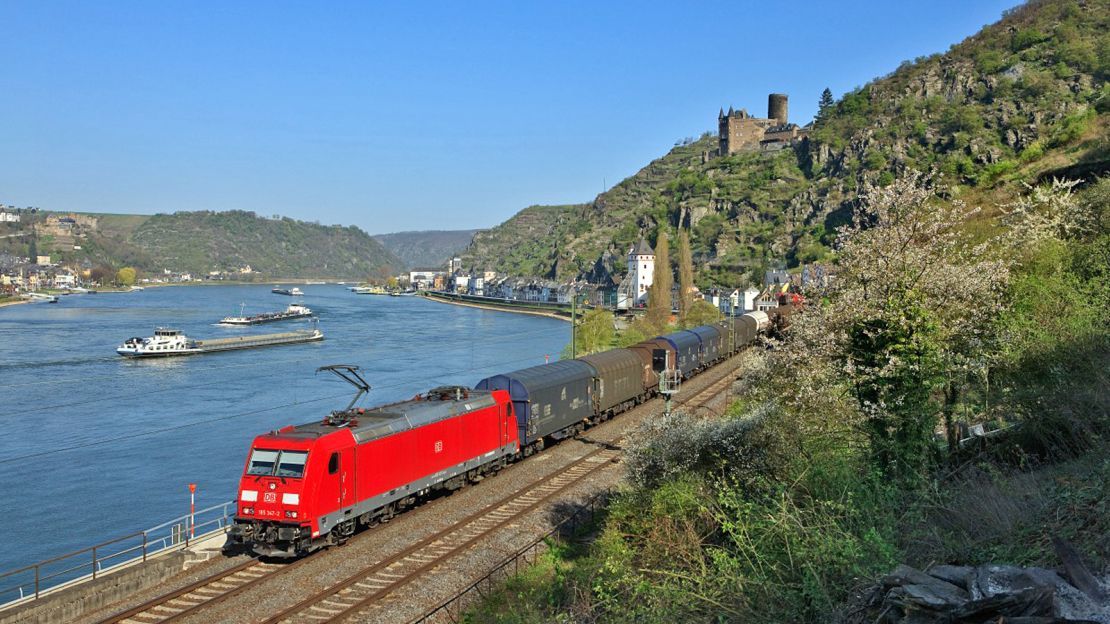
The Rhine, one of Germany’s most scenic river valleys, is great to explore by train. The track between Cologne and Mainz meanders along the great waterway’s banks past gentle hills, vineyards and crumbling castles.
There are not one, but two train lines running along this section of the Rhine, one on either side. The left side is generally considered the more scenic of the two. Interchanging between the two is possible at Koblenz.
Moselle Valley
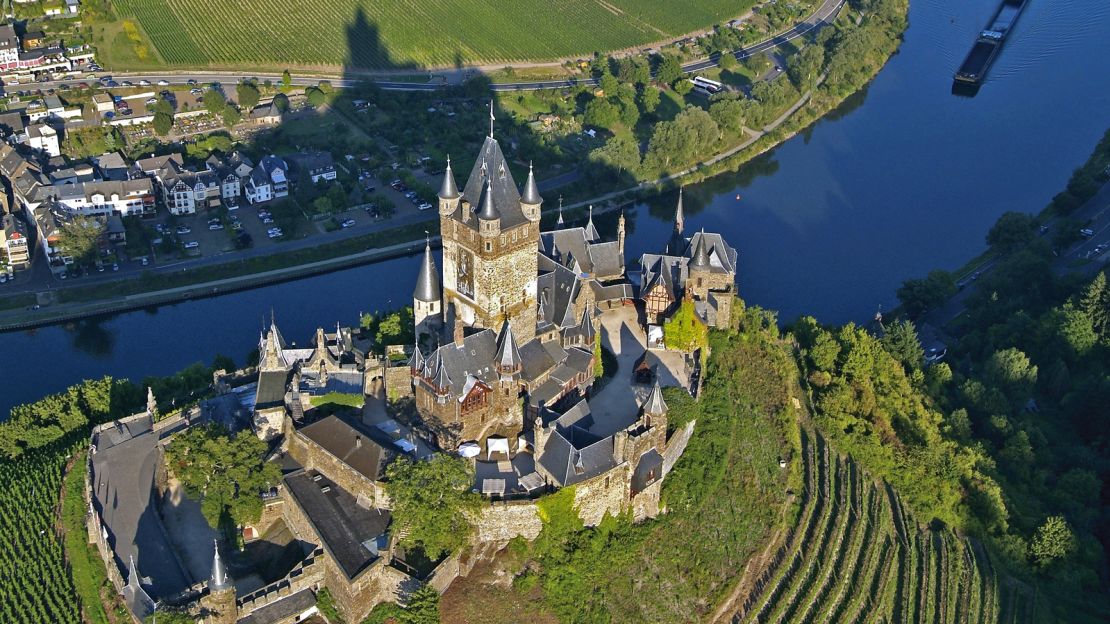
The equally scenic Moselle river route, through one of Germany’s most important wine regions and along the Rhine tributary, runs between Cochem and Koblenz.
It can potentially be combined with a Rhine valley trip for the full German river-rail experience.
Schwebebahn

Born from a late-19th-century steampunk vision of the future, the Wuppertaler Schwebebahn is the world’s oldest suspension railway of its kind in the world.
A classic example of technology from the German Grunderzeit golden industrial age, this elevated track with unexpected views of sixth-story apartment windows is reason enough to visit the west German city of Wuppertal. The line was built between 1897 and 1903 and runs along the Wupper river valley for 13 kilometers.
The gently swaying Schwebebahn is still in use as a normal commuter train, moving 25 million passengers annually between its beautiful stations – and it can be used with regional train tickets.
Mittenwaldbahn
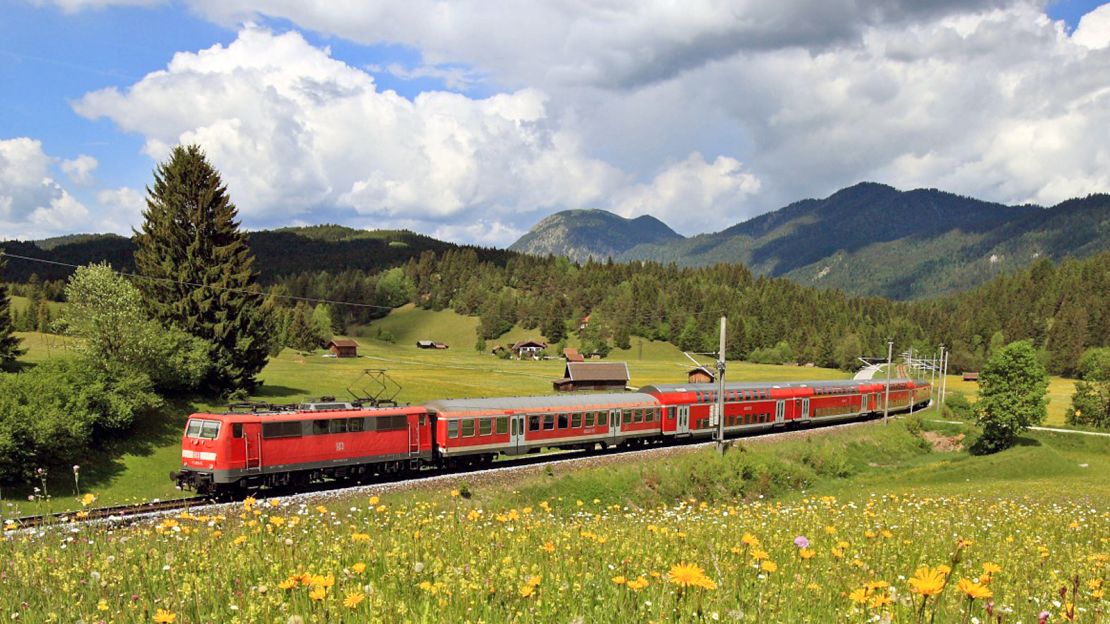
For those who prefer proper mountains to the gentle slopes of river valleys, there’s the Mittenwald Railway (Mittenwaldbahn).
This alpine track runs between Innsbruck in Austria and Garmisch-Partenkirchen in Bavaria, southern Germany.
It takes in a series of dramatic mountain valleys, replete with “Heidi”-esque wooden farm buildings and dairy cows wearing enormous bells. The most outstanding part of the route is the long section along the edge of the Martinswand, a steep rock face riddled with tunnels.
S-Bahnring Berlin
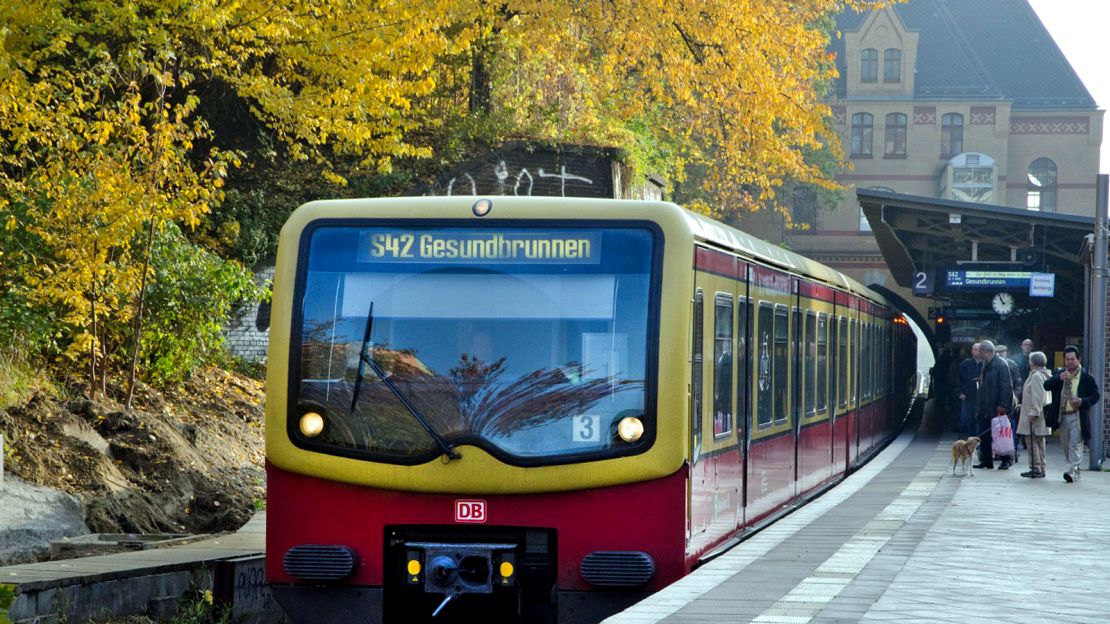
The Berlin Ringbahn (Circular Railway) is a great – and cheap – way to explore one of Germany’s most fascinating cities.
Like the Circle Line in London or metro lines 2 and 6 in Paris, the Ringbahn is an overground suburban loop around the city center, taking in the sights of a tour for the price of a single train ticket (€2.70). Because of its distinctive shape, the line is often referred to as the “Hundekopf,” or Dog’s Head.
Kirnitzschtal Tramway
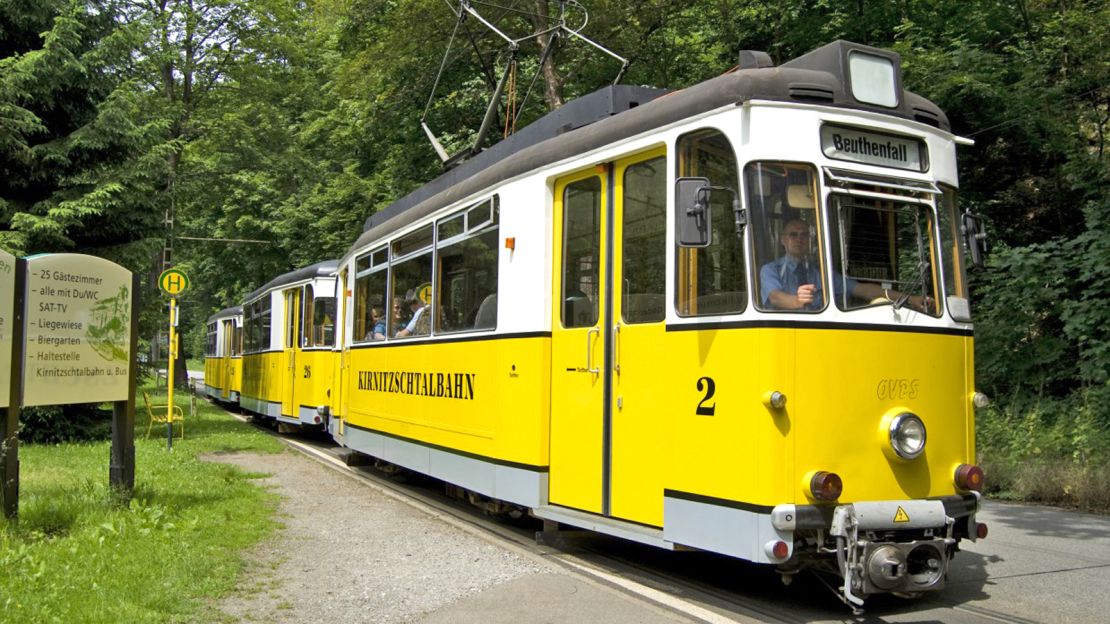
For those who like to combine historic tramways with pleasant mountain hikes, there’s the Kirnitzschtal Tramway. The line opened in 1898 and runs through the Kirnitzsch river valley in Saxon Switzerland (an area of Germany close to the border with the Czech Republic), from the town of Bad Schandau up to the Lichtenhain Waterfall.
The historic tramcars from 1966 serve the starting points of many walks in the area.
Hamburg: Sylt and the Hindenburgdamm
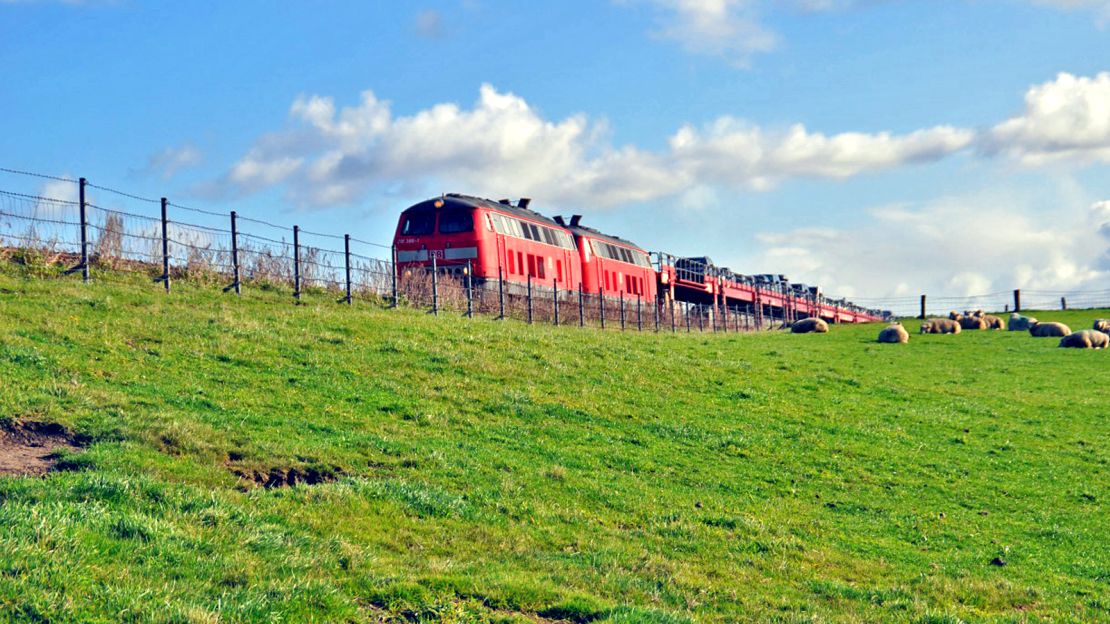
To take a train over an ocean, passengers can board the regional train connecting Hamburg with popular holiday island Sylt in the North Sea.
The only connection the island has to terra firma is the 11-kilometer long Hindenburgdamm, or Hindenburg Dam. It was opened in 1927 and is exclusively a railway corridor, which means that even cars traveling to Sylt have to be loaded onto the train before crossing.
A train trip along the causeway between the car terminals at Niebull on the mainland and Westerland on Sylt with mudflats and the sea on both sides takes about 30 minutes.
Kiel: Lubeck through the Holsteinische Schweiz
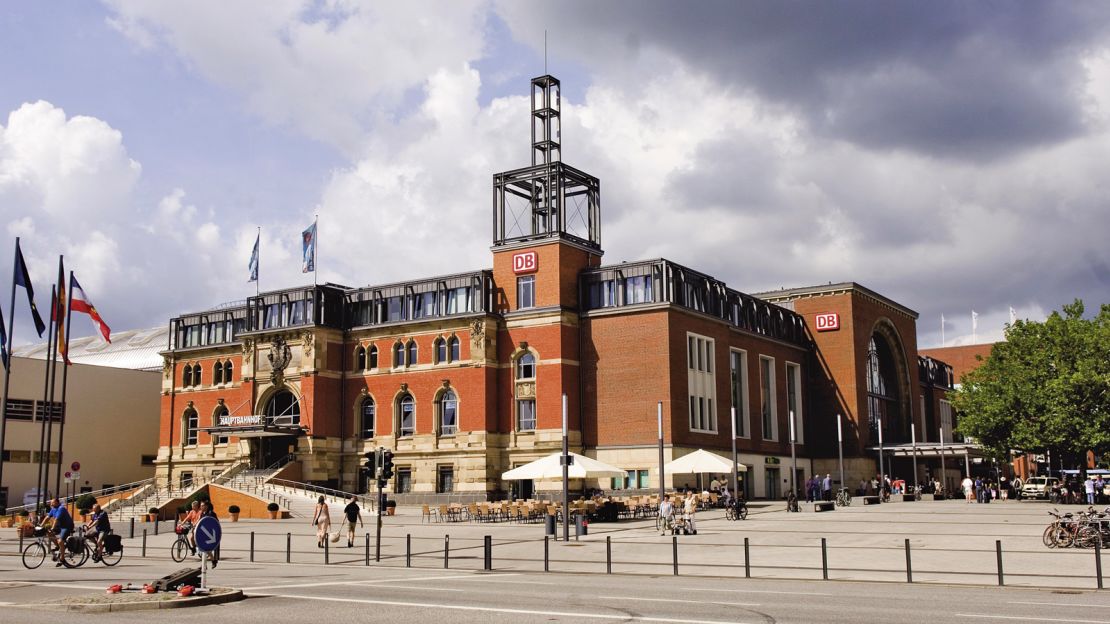
Another scenic route close to the sea is the railway in eastern Schleswig-Holstein in north Germany. It links Kiel and Lubeck, the only two cities in the state and travels through Holstein Switzerland, a pleasant recreational area characterized by large lakes and dark forests.
Marcel Krueger is a German writer and translator based in Dublin and Berlin. He mostly writes about history, travel and beer – or all three combined.











